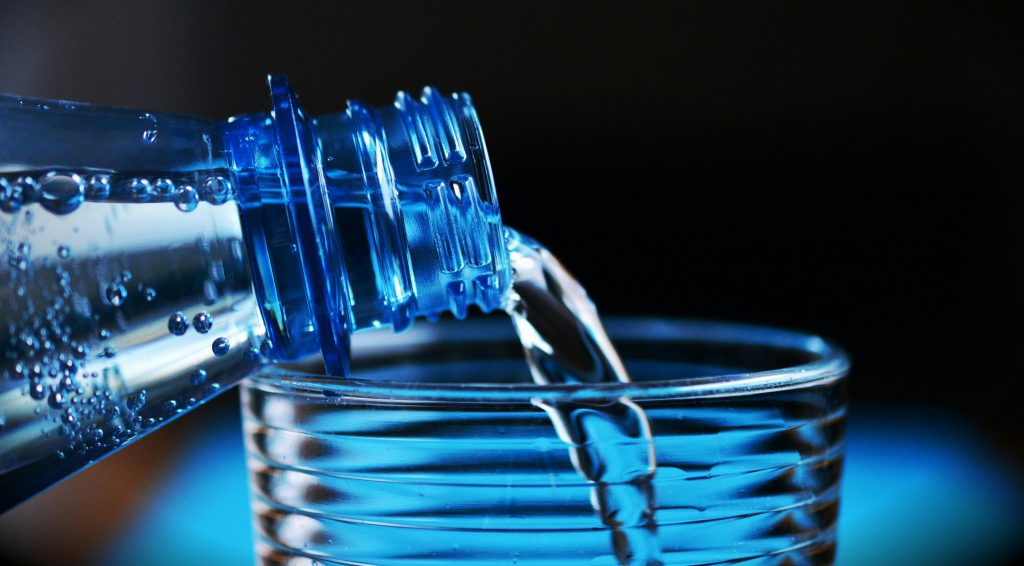Disclaimer: This website provides health information for educational purposes only and is not a substitute for professional medical advice, diagnosis, or treatment. Always seek the guidance of a qualified healthcare provider with any questions you may have.
Water is essential for life. Every single cell in your body needs water to work properly. You drink it, cook with it, and even bathe in it. But with so many types of water available—tap, spring, distilled, alkaline—it can be confusing to know what’s best. One type that many people use is purified water. But is purified water good for you? This guide breaks it all down in simple terms.
What Is Purified Water?
Purified water is water that has been filtered or processed to remove impurities. These impurities may include:
- Bacteria
- Viruses
- Chemicals (like chlorine or fluoride)
- Heavy metals (like lead or mercury)
- Sediments and other solids
The goal of purification is to make water as clean and safe as possible for drinking and cooking.
How Is Water Purified?
Water purification is the process of removing harmful contaminants, bacteria, and impurities to make water safe for drinking. There are several effective methods used to purify water, each with its own strengths.
-
Reverse Osmosis (RO):
This method uses pressure to push water through a semi-permeable membrane. The membrane traps contaminants like lead, fluoride, chlorine, and bacteria, allowing only clean water to pass through. RO systems are popular in homes but may also strip beneficial minerals from the water.
-
Distillation:
In this method, water is heated until it turns into steam. The steam is then cooled and condensed back into liquid form, leaving behind salts, heavy metals, and most chemicals. While extremely effective, distillation also removes minerals, and the process can be slow and energy-intensive.
-
Carbon Filtration:
Activated carbon filters are commonly found in water pitchers and faucet attachments. They work by trapping contaminants like chlorine, pesticides, and some heavy metals. They also improve taste and odor, but may not remove all bacteria or dissolved solids.
-
UV Treatment:
Ultraviolet light is used to kill bacteria, viruses, and other pathogens. It’s a chemical-free method, but it doesn’t remove solids, metals, or chemicals.
Choosing the best purification method depends on your water source and specific needs.
Benefits of Purified Water

So, is purified water good for you? Absolutely—especially when it comes to safety and peace of mind. Here are some key benefits that make purified water a smart choice for many households:
-
Fewer Contaminants:
Purified water has been treated to remove common pollutants found in tap water. This includes chlorine, lead, mercury, pesticides, and bacteria. These contaminants, if consumed regularly, can affect your health over time. By choosing purified water, you’re reducing your exposure to these harmful substances.
-
Safer for People with Health Issues:
If you or someone in your home has a weakened immune system—such as older adults, infants, or people undergoing medical treatments—drinking purified water is safer. It reduces the risk of waterborne illness and minimizes exposure to germs and chemicals.
-
Better Taste & Smell:
Purified water often tastes fresher and smells cleaner. This is because it’s free from additives like chlorine or sulfur, which can give tap water an unpleasant flavor or odor. When water tastes better, you’re more likely to stay hydrated.
-
Great for Baby Formula:
Babies are especially sensitive to contaminants. Using purified water to mix baby formula ensures that it’s free from bacteria, nitrates, and harsh chemicals, giving your baby a safer start.
Potential Drawbacks of Purified Water
While purified water is generally safe and clean, there are a few potential downsides that are worth considering before making it your everyday choice.
-
Loss of Natural Minerals:
Some water purification methods, such as reverse osmosis and distillation, are excellent at removing contaminants—but they also remove beneficial minerals like calcium, magnesium, and potassium. These minerals are not only essential for your health but also give water a pleasant taste. While you can still get these nutrients from food, drinking water is usually a small but regular source of them. If you rely only on demineralized water, you may want to look into systems that add minerals back in or consider a balanced diet to make up for the loss.
-
Higher Cost:
Purified water is often more expensive than tap water. If you’re buying bottled purified water regularly, the cost can add up quickly. Even installing a home purification system—while more economical in the long run—requires an upfront investment and occasional maintenance. If you’re on a budget, it’s important to weigh the benefits against the financial cost.
-
Environmental Impact:
The convenience of purified bottled water comes with a hidden cost: plastic waste. Millions of plastic bottles are discarded each year, and not all of them get recycled. This contributes to pollution and environmental harm, especially in oceans and waterways. To reduce your impact, opt for a reusable water bottle and consider using a home purification system. It’s a more sustainable way to enjoy clean water without adding to plastic waste.
Purified water is still a healthy option, but like with anything, balance is key. Understanding both the benefits and the drawbacks helps you make smarter choices for your health and the planet.
Is Purified Water Healthier Than Tap Water?

This depends on where you live. In many cities, tap water is already clean and safe to drink. It’s tested often to make sure it meets safety standards.
However, in places where water systems are old or poorly maintained, purified water can be a healthier choice. It’s also a good option when traveling to areas with unsafe water.
Who Should Consider Drinking Purified Water?
While purified water is generally a good option for everyone, some people may benefit from it more than others due to health needs or water quality concerns. Here’s who should especially consider making purified water part of their daily routine:
-
People with Health Conditions:
If you have a weak immune system due to illness, surgery, or medical treatments like chemotherapy, your doctor may recommend purified water. It’s less likely to contain bacteria, viruses, or chemicals that could make you sick. Drinking purified water can offer an extra layer of protection when your body is more vulnerable.
-
Parents of Infants & Young Children:
Babies and toddlers are more sensitive to chemicals and microbes than adults. Contaminants like nitrates, lead, or chlorine in tap water can affect their development or cause health issues. Purified water is often recommended for mixing baby formula or for drinking during early childhood, especially in areas where tap water quality is uncertain.
-
Anyone with Poor Tap Water Quality:
If your tap water has a strong chlorine smell, metallic taste, or cloudy appearance, it may not be safe. Some regions also have water supplies contaminated with heavy metals, pesticides, or bacteria. In these cases, purified water is a safer and more pleasant alternative, ensuring your hydration doesn’t come with hidden risks.
How Much Purified Water Should You Drink Daily?
Most experts recommend drinking about 8 cups (64 ounces) of water each day. This can vary depending on:
- Your age and weight
- How active you are
- The climate you live in
- Whether you’re sick or pregnant
You can meet your daily needs with a mix of purified water, other drinks, and water-rich foods like fruits and vegetables.
Does Purified Water Help with Detox or Skin Health?
Some people believe that purified water helps detox the body or improves skin health. While water itself helps your kidneys flush out waste and keeps your skin hydrated, there’s no strong proof that purified water does a better job than regular clean water. Still, it’s a good option if your regular water isn’t the best quality.
How to Store Purified Water
To keep purified water clean and safe:
- Use a clean, food-grade container
- Store in a cool, dark place
- Keep the lid tightly closed
- Don’t drink directly from the storage container—pour into a clean glass
Can You Use Purified Water for Cooking?
Yes! Purified water is great for cooking. It can help food taste better, especially when boiling pasta, making coffee, or cooking soup. It’s also a safe choice when you’re not sure about the quality of your tap water.
Can You Boil Tap Water Instead of Purifying It?
Boiling water is one of the oldest methods of making it safer to drink. When you boil water for at least one minute, it kills most bacteria, viruses, and parasites. This is helpful in emergency situations or when you’re unsure about the water quality.
However, boiling doesn’t remove chemicals, heavy metals, or sediments. If your water has things like lead or chlorine, boiling won’t help. Purified water, on the other hand, goes through filters or processes like reverse osmosis to remove both germs and chemicals. So, while boiling is useful in some cases, it doesn’t replace proper water purification.
How to Choose the Right Water Purifier for Your Home
Choosing the right water purifier for your home depends on your water source, budget, and what you want to remove from your tap water. Not all filters do the same job, so it’s important to understand your options before buying.
Pitcher filters are one of the most common choices for households. They are affordable, easy to use, and don’t require installation. These filters improve taste and reduce chlorine, but they may not remove heavy metals or bacteria. If your main concern is better-tasting water, a pitcher filter might be all you need.
Faucet-mounted filters attach directly to your sink faucet. They’re a step up from pitchers, removing more contaminants such as lead, sediment, and some pesticides. They’re still easy to use and more cost-effective than larger systems, making them a solid option for renters or smaller households.
Reverse osmosis (RO) systems are more advanced and often installed under the sink. These systems use multiple filters, including a semi-permeable membrane, to remove nearly all impurities—bacteria, viruses, heavy metals, and chemicals. RO systems are more expensive and can waste some water during the process, but they’re a great option if your tap water has a lot of contaminants.
UV purifiers use ultraviolet light to kill bacteria and viruses. They’re chemical-free and work well in areas with microbial concerns. However, they don’t remove solids or chemicals, so they’re often used with another filter type.
Before you buy any purifier, it’s smart to check your local water quality. You can look at your city’s water report or use a home water test kit. This helps you understand what’s in your water and choose the filter that meets your specific needs—without overspending on features you don’t need.
Does Purified Water Go Bad?
Unlike milk or juice, water doesn’t spoil. But if it’s not stored correctly, even purified water can become unsafe. Once the container is opened, germs from the air or your hands can get in. Over time, this can affect the water’s safety and taste.
To keep it fresh:
- Store it in a clean, sealed container
- Keep it out of direct sunlight
- Use it within a few days once opened
If your purified water starts to smell or taste off, it’s best to pour it out. Fresh, clean water is always the safest choice.
Final Thoughts: Is Purified Water Good for You?
Yes—purified water is a safe and healthy choice for most people, especially if your tap water isn’t clean or tastes bad. It removes harmful substances, tastes better, and can give you peace of mind.
However, if your tap water is already tested and safe, you may not need to switch. Always weigh the cost, availability, and environmental impact before making a choice.
Whether you choose purified, filtered, or tap water, the most important thing is to stay hydrated every day. Your body—and your skin, muscles, and even your brain—will thank you.




